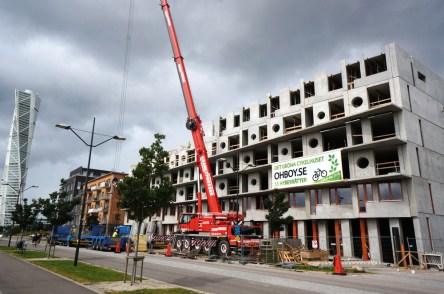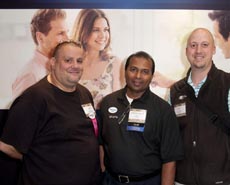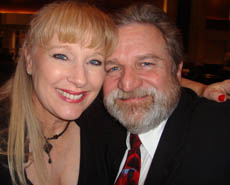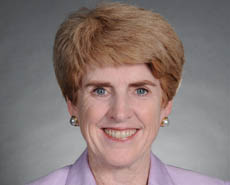Across the U.S., commercial and residential property owners are required to comply with ENERGY STAR® energy benchmarking and transparency policies. In these jurisdictions, metrics ranging from electricity usage per square foot to greenhouse gas emission volumes must be reported to the U.S. Environmental Protection Agency ENERGY STAR® Portfolio Manager®, the most widely used energy reporting compliance system in North America. Gathering data Gathering the volume of required energy consumption and billing data and submitting it can be daunting. This is especially true for property management staff who are short on time or energy expertise. Fortunately, clients using the Yardi Energy Suite can draw on resources at every stage of the process. “We have many creative ways to get whole building data that aren’t available from most other property management software providers,” said Christy Cannon, a solutions consultant for Yardi Energy. For example, Energy Efficiency offers a cost-effective alternative to shadow metering. This method tracks individual energy usage in multi-tenant buildings by reading tenants’ utility meters for accurate billing. The data, along with common area usage from utility bills, is pushed into Portfolio Manager and used to generate a performance score. “Along with generating a score, the data can produce some really good metrics that help building owners understand their performance,” Cannon said. Bringing clarity with meters & dashboards Yardi’s manual utility meter reading service can read resident or tenant utility meters monthly, bimonthly, quarterly or at other intervals. Monthly or bimonthly readings allow the property to apply for ENERGY STAR Building Certification. A mobile meter reading app transfers the data into a dashboard where it’s aggregated into whole building data. “This approach provides a granular look at consumption, and we can separate common areas from tenant areas for greater clarity,” Cannon said. Another approach...
Insights From AIM
3 Key Takeaways
Multifamily marketers from across the country converged in Huntington Beach for the 2017 Apartment Internet Marketing (AIM) Conference on May 7-10. Several hundred professionals gathered to explore the industry’s latest marketing trends and best practices. Here are three ideas from this year’s event that might buoy your marketing efforts: Tell Your Story Marketing is not just an exercise in generating the lowest cost per lead. It’s a complex combination of creativity and strategy that ultimately tells a story to potential customers. In a world of constant digital distraction, today’s marketers need to have the skills to create content that will rise above the noise. When it comes to creating engaging content, authentic storytelling and video rule. AIM panelists Jamie Matusek, President of Catalyst, Lori Valenti Webb, Director of Marketing at Wood Residential Services, and Anna Geary, Founder of Show My Property TV, explored the ideal customer experience. Matusek explained that experiences progress through the Happiness Halo framework, from anticipation to interaction to afterglow. Anticipation is the process of building excitement, teasing potential customers into wanting to know more. This can be seen in pre-event promotion and behind-the-scenes videos. Interaction immerses customers in an experience, providing emotional direction to aid in decision making. Multifamily application could be a time-constrained promotion, such as a rent discount, or highlighting property perks, such as free recreation classes or dog-friendly happy hours. Afterglow focuses on creating a positive memory, reinforcing brand positivity. As Matusek explained, bad things will happen, such as a poorly executed maintenance request or a negative front office visit, so it’s important to positively direct the sentiments with each resident touch point. Crafting an effective story can combine these three concepts into any medium, from a blog or social media post to a video. At AIM, video was...
Affordability Crisis
Toolkit for Development
While the ghosts of the last decade’s housing crisis have (mostly) been put to rest, for many families priced out of their local markets the need for affordable housing remains strong. Like the PC’s infamous “blue screen of death,” the Urban Institute’s map of affordable housing inventory is terrifying to behold. A handful of dark blue swatches in Midwest represent healthy levels of affordable housing inventory. The rest of the country, on the other hand, sits awash in the lightest indigo hues. From barely perceptible azure to the palest cerulean, a majority of states contain less than 50 units per 100 extremely low-income households. More than a third sit at, or close, to zero. As demand for budget-friendly rentals continues to rise, many communities struggle to provide adequate supply. In response to this affordable housing crisis, the White House recently released the Housing Development Toolkit. Part call to action, part policy overhaul, the toolkit’s main purpose it to help cities increase their affordable housing inventory. “The growing severity of unsupplied housing markets is jeopardizing housing affordability for working families,” write the toolkit’s authors, “increasing income inequality by reducing less-skilled workers’ access to high-wage labor markets, and stifling GDP growth by driving labor migration away from the most productive regions,” Accumulated Barriers While New York City’s real estate market is the stuff of legend, until recently most cities were able to supply adequate housing to residents. Unfortunately, several factors have conspired over the last few years to shrink stock and ramp up costs. These “accumulated barriers” are identified by the toolkit as lack of adequate construction, high job growth in areas with low vacancy rates, gentrification, and cost-per-unit increases paired with insufficient public assistance. “The accumulation of these barriers has reduced the ability of many housing markets to...
Pedal Power
Bike Apartments
In bike-friendly Sweden, a new apartment complex includes custom design elements aimed at encouraging residents to ditch cars in favor of pedal power. For many urban apartment dwellers, parking spots and constant traffic severely undercut the benefits of living within the city limits. Sure, public transportation, walking, and cycling are all reasonable alternatives to private automobiles, but sometimes the hassles outweigh the benefits. In Malmö, Sweden, a new apartment complex is ditching carports for bike racks in the hopes that future tenants will embrace a car-free existence. “It’s a perfect city for biking,” says Cykelhuset Ohboy spokesperson Ellen Mendel-Hartvig. “It’s super flat, and you can get anywhere within 15 minutes.” Centrally Cycling Located just minutes from the city center, Cykelhuset Ohboy, a 7-story bicycle house/hotel, is an easy trek by foot or bike from major shopping districts and even the central train station. Large delivery mailboxes will help resident shop online for items that might be too difficult to transport without a car, though the building’s fleet of cargo-bikes will also help with heavy loads and even help parents transport their children to school or daycare. “The strategy is to look at why people have to use cars, and substitute bikes, “Cord Siegel, one of the architects at Hauschild + Siegel, which designed Cykelhuset Ohboy, tells Fast Company in a recent interview. The Un-Motor Lodge In addition to 55 one to four-bedroom units, Cykelhuset Ohboy will also double as a hotel, with 31 lofts available for nightly rentals. Available for shorter tenancies – a few weeks to a month or two, the 237-sqft lofts include a small kitchen and can sleep up to three people. In a play on the traditional “motor-lodge,” guests will be able to ride their bike right up to their...
Multi-Generational Living...
Demand for Next Gen homes is up
The trendlines continue to point to a steady, albeit slow, recovery of the housing industry. Builder confidence in the market for newly-built single-family homes hit a significant milestone in June, surging eight points to a reading of 52 on the National Association of Home Builders/Wells Fargo Housing Market Index (HMI). According to NAHB, any reading over 50 indicates that more builders view sales conditions as good than poor. “This is the first time the HMI has been above 50 since April 2006, and surpassing this important benchmark reflects the fact that builders are seeing better market conditions as demand for new homes increases,” said NAHB Chairman Rick Judson, a home builder and developer from Charlotte, N.C. “With the low inventory of existing homes, an increasing number of buyers are gravitating toward new homes.” On a more personal level, the fluctuating economic market has resulted in a shift in consumer perspectives. The larger population seems be aware of the financial commitments attached to home-ownership and realigns priorities in order to achieve the much longed-for independence. In recent years we have witnessed the emergence of trends like shared housing and rent-to-own homes that aim to somewhat appease the effects of the recession. Balancing entry-level pay with high cost of living and substantial debt is a major challenge which not many young adults are willing to take. Rather than struggling to make ends meet, college grads or adult children choose to move back with their parents, which can be a wise decision in the current context. Acting as a financial lifeline, this interim is an excellent opportunity for boomerang kids – as social scientists call them – to build a savings account, find stable jobs and start a family. This change in consumer attitudes has also led...
Homes of the Future
Innovation overload
The homes of the future, they say, will be maintained, designed and built using the power of computers. Climate change, population growth, and geo-political shifts are the main factors in redesigning residential spaces. The U.N. says the world’s population could surpass 10 billion by 2100; this may make us think about sky homes and underwater residences. New construction techniques with emphasis on sustainability are gaining ground, and architects advise that we’ll use the sun, the wind and the water to power our future homes. The home of the future will be an interconnected space, with itself and with its inhabitants. It will be where the afflicted city dweller can find balance, regain energy, and keep a sustainable lifestyle, and it will have to be an adaptive space that changes and grows to fulfill the needs of the people living there. The residence of the future will no longer have static rooms, designed for only one type of activity; and its furniture and technology will not serve just one purpose. Functionality of home objects will be multiplied, with many configurations each piece. Adaptive furniture will play a major role in this vision of the future. Already designers have started proposing ways of hiding the bed in a bedroom studio to make space for a creative studio. Babushka chairs already populate tiny apartments in metro areas where space is a luxury amenity; the same lack of space that forces many metro area inhabitants to sacrifice the full-size dining table also encourages them to purchase something like the Bada table from Brooklyn-based Ecosystems. Stair cases have already been turned into drawers creating storage space in a very elegant manner, and the pop-up office décor won’t let anything in sight when you have visitors over. Trendhunter gathered almost...
Taking Back Data Control...
Has syndication jumped the shark?
Walt Baczkowski thinks real estate listing syndication has jumped the shark. But the CEO of the San Francisco Association of REALTORS® (SFAR) has already figured out how to bring happy days back again. In recent months, sentiment surrounding consumer-facing real estate syndicators like Zillow and Trulia has shifted. REALTORS® and Multiple Listing Services have expressed concern about the practice of “scraping” exercised by some listing aggregators, which entails reusing listing data without permission from the broker or agent representing the property. Another concern is the ability for a prospective buyer to easily reach out and contact the listing broker/agent, whose status as the primary contact for the property listed isn’t always clear. Many real estate professionals are realizing that more control over their listing information is preferred, instead of reckless syndication that may produce no real results. “It jumped the shark because it became a detriment to the REALTORS® when they lost control,” Baczkowski explained. “Their pictures weren’t even appearing next to their listings. And then people were taking their listings, and doing things with them. It started out being this great benefit, but it suddenly turned into a negative. Now, it’s time to take back control of the data.” For SFAR, that meant setting up a consumer-facing real estate search portal site, developed by Point2. Consumers can search for homes and businesses for sale and rent, with all the data sourced directly from the San Francisco Multiple Listings Service website. If updates are made by a broker or agent to the listing – like a pending sale – the consumer site will also be updated in near real-time. In a city with a residential real estate market so hot that there are only 900 active listings, on average, of homes for sale, the timeliness of...
Ken Doble
Quantitive Realty Capital
With more than two decades of experience in the residential property management industry, Ken Doble, Partner at Atlanta-based Quantitive Realty Capital (QRC), is well-versed in what’s trending in multifamily today. A technology-savvy executive who shares updates via his Twitter feed daily, Doble began his career 20 years ago as the on-site property manager of a 24 unit apartment community of Atlanta apartments. He’s also a military veteran, and served as a paratrooper in Panama and the Gulf War. We asked for his insight on current happenings in multifamily in the Southeast and Mid-Atlantic, where QRC is in the process of acquiring more properties, including distressed assets that need improvements. Most of their current 12 properties are comprised of class B and C apartments. There’s strong bidding competition among investors for class A inventory in the southeast, Doble noted, especially in top markets like Atlanta. QRC has focused on opportunities in the secondary markets and properties that need rehabilitation. In 2011, the company spent $7 million on renovations. Improving those properties is Doble’s favorite part of the work he does today. “I like seeing the transformation of the property. We typically go in and buy distressed properties that have deferred maintenance. I like to go in and do the renovations on those properties and see the properties come up from a low occupancy, say in the 60s, to the 95-96 range. I like to see the properties really stabilize, see the happy residents, and see the properties and staff really take off and perform.” At the Parkview Apartments in metro Atlanta, where 18 units were down and there were crime, aesthetic and mold issues on site, QRC achieved a complete turnaround in just a number of months. With large numbers of families in residence at...
Alex Ruiz
Picerne Real Estate Group
With a long history in property management that started in his hometown of New York City, Alex Ruiz of Picerne Real Estate Group is on top of the latest developments in tax credit, project-based Section 8, and public housing agency regulations. Alex was one of the many terrific clients to join us for training at YASC DC this week. He coordinates the use of Yardi products for 128 properties in Picerne’s affordable management division, trains on-site property management staff on how to use Yardi’s systems, and picks up compliance paperwork duty as needed. “It’s an IT job but it’s not really an IT job,” Alex told us. “I get to do a little bit of everything. I visit the properties, interact with the staff, listen to their recommendations, and find out what they want Yardi to do for them. I’m an accountant one day and an IT person the next.” He’s made great use of his former experiences as a property manager, both in New York City and Orlando, in order to better serve his coworkers’ IT needs and implement software and report-writing customizations that allow them to do their jobs more efficiently. “When someone comes with a request or wants to see something in Yardi, I can think the process through from the end user’s perspective,” he said. “And when I do Yardi training, I understand what they go through. When people come into IT straight out of school, they just know the database side, and not the day to day operations for property management or accounting or finance.” One of his major goals is moving the Picerne properties he works with toward a paperless office, which can be tough when compliance requires so much paper work. Procure to Pay is the next...
Joanne Massey
Sundance Square
Joanne Massey is the controller for Sundance Square, the renowned Fort Worth property management firm owned by the Bass family that controls 35 city blocks of the city’s downtown core, including numerous historic buildings, and is considered one of America’s most successful urban revitalization efforts. But her interest in cool stuff from the past doesn’t end when she leaves the office. In her free time, Joanne and her husband Robert enjoy shooting vintage lever action guns – “the kind that cowboys used to shoot” – in Cowboy Silhouette competitions. She’s reached the AAA level in many of the competition categories, which is no surprise when you learn that she’s a former national-caliber archery athlete. She got into Cowboy Silhouette after reconnecting with her husband, a college sweetheart whom she married four years ago. He was attending competitive rifle and shotgun events, so she tagged along. The Omaha native is also an avid golfer who hits the course several times a month. “I won’t go and just sit, that’s too boring,” she told us. While attending college at Texas Christian University, she was the top female collegiate archer in the state of Texas, and ranked in the top 10 nationally. Though the U.S. team selection process for the 1980 Olympic Games didn’t go in her favor, she has fond memories of her archery days. Joanne is also right on target with her career at Sundance Square, where she rose up through the Bass corporate accounting office to head up the accounting team for Sundance and oversee numerous major software transitions. Her team initially ran two high-rise office towers, then merged with another Bass-owned operation to form Sundance Square that oversees all of the downtown properties. She loves her job. “Being in a property management office,...
Lucy Billingsley
Billingsley Co.
Lucy Billingsley’s distinguished career in real estate development ranks her among the nation’s leading female industry executives. In the fourth decade of her career, she maintains great passion for the next project to command her attention. “My favorite deal is always the next one,” she told us during a recent interview. Billingsley Company, the Dallas-based company with land, office space, industrial, retail, single-family, multi-family, mixed-use and master-planned developments that she and her husband Henry founded in 1978, is flourishing. New phases of 10,000 unit master-planned rental communities The Neighborhoods of Austin Ranch and Cypress Waters are currently underway, and Billingsley is excited about changing the face of the multifamily experience. The company is also expanding its office and industrial holdings. Billingsley also devotes much of her time and energy to charitable work, and her philanthropy has included The Chiapas Project, Grameen Foundation USA, Women for Women International, National Geographic Society Council of Advisors, World Affairs Council (Dallas), Brain and Creativity Institute at USC, Council of Foreign Relations, The Hockaday School, and The Hunter and Stephanie Hunt Institute for Engineering and Humanity Advisory Board. In a short conversation, she filled us in on few views of the current marketplace, how she chooses philanthropic causes, and the lessons that her father, famed developer Trammel Crow, imparted to her. TBS: It’s been a challenging climate for real estate sales, investment and development over the last several years, although Texas come through the down economy very strongly. What do you see as the most pivotal focal points for property executives as the financial climate nationally continues to improve? LB: I think the multifamily world is a world that has made a significant and permanent shift in its role in America today – the shift is because the American...
From the Trenches
Views of a NYC property manager
William Lluberes has worked in international trade in Chile, had a career in the information technology field, and now makes his living as a New York City property manager, one of the most eclectic real estate jobs known to man. Self-described as someone who “gets bored easily,” William seems to have found one type of work that will never allow that to happen. The world of New York City real estate, and its subregion of apartment leasing, has too much complexity, ongoing change and nuance. New York’s run-and-gun rental climate of low vacancies, tiny apartments and cutthroat pricing is famous around the globe, but the recent economic downturn had major impact on leasing realities for property managers, William told us. Here are some of the insights he shared from the trenches: -Renters in the city have become more frugal with their hard-earned dollars, and they’re now willing to commute a bit (up to 30 minutes) to get to jobs in Manhattan. Fed up with prices, entry level workers are willing to consider neighborhoods like Queens or Long Island City where they might be able to get a 750 square foot unit for around $1600, vs. a 400 square shoebox for $2225 downtown. -Specials and renovated buildings are easier to come by. Property owners, realizing the market has become more competitive, are often undergoing piecemeal renovations of properties with fixtures older than 15-20 years and updating with granite countertops, stainless kitchen appliances, faux cherry wood and more. 13-month leases with one month free at signing are also becoming more common, William said. -Foreign capital. The highest end apartment units in Manhattan and elsewhere, upwards of $2500 a month, are often being rented to visitors and relocated residents from Europe and Asia, he observed,...
Courtney Trindell-Reyes
BRE Properties
In her nearly 14 years with BRE Properties, Courtney Trindell-Reyes has worked in many aspects of property management, from her start as a leasing agent to her role today as a Senior Business Systems Analyst. Her career path has given her unique perspective on the changing face of residential property management and she feels lucky to have achieved a particularly good work-life balance while enjoying professional success. Courtney and her husband, Benjamin Reyes (a facilities engineer for BRE), have three sons, ages 3, 9, and 17, and the family is especially close. You can find them enjoying time together at the skate park in Riverside or traveling to the beach in their fifth wheel RV during school vacations. Of paramount importance to Courtney is that her family gets her full attention while she’s at home, and her company receives equal treatment at work. “This balance is really important for my family,” she said. “BRE has been just gracious and amazing to ensure that I have good balance. They’ve made sure that I’ve had it. I don’t know that I would have been able to achieve that on my own.” Her worlds collide when she uses her son’s ages to recall when certain tech transition moments took place at the office. One was especially memorable – at the end of a long SQL training session with Yardi’s Tamara Berndt, Courtney had to tell everyone she’d be unable to continue the call – her water had broken while on the phone. “Tamara and I joke that that awful SQL scripting class put me into labor,” she recalled. While her schedule doesn’t allow time for many activities that aren’t work or family related, Courtney’s an extreme couponer who managed to cut her family’s $1500 monthly grocery bill in half by careful shopping. She also spends any free time making scrapbooks for her sons so they’ll be able to look back on their childhoods. At work, she’s also a master of a balancing act. While working on multiple projects in different areas of the company simultaneously, Courtney says she enjoys handling everything from minute detail questions about technical problems for BRE staff to overseeing major upgrade projects. She uses all the information she’s collected throughout her career to contribute strong insight that benefits BRE. “I love that I can do a little bit of everything in my job every day. I don’t think I could do the same thing every day all day long. I love that I can do everything from high level support to helping somebody log in to Yardi, very basic work to a very high level work, and touch so many departments,” she said. She is fascinated by the industry’s transition to a paperless transaction system and has been a technical adviser on BRE’s implementation of automated rent collection. The company holds a portfolio of 88 multi-family communities with 25,192 units in California, Arizona, Washington and Colorado. * * * * Learn more about Courtney What is your favorite type of music? People would be surprised to hear that I love gangster rap. I don’t have the looks of someone who would like this type of music! What kinds of food do you like? I love Japanese food. I think I was Japanese in my past life (if I had a past life…) If you could have dinner with anyone, alive or historical, who would it be? Oprah What are some things on your bucket list? I want to travel to Turks and Caicos What athlete or sports figure do you most admire? Being that I am the only girl in my house with 4 boys I have to say Michael Jordan. He’s the best basketball player of all time. What online sites do you visit? I do all my shopping online always. I did all of my Christmas shopping for everyone online....
Tom Schneider
Waypoint Real Estate Group
“The best way to learn from anything is just to jump in” – is a motto that has carried Tom Schneider from the college football field to his work in the residential property management industry. As one of the first employees at Oakland-based Waypoint Real Estate Group, Tom’s eager approach to learning and doing has helped the company succeed. Waypoint has rehabilitated hundreds of homes and supports responsible residents achieve the dream of homeownership since its founding in 2008. Tom has been involved in many aspects of the company’s growth, from the Acquisitions team to his current job as Application Developer for Waypoint’s portfolio management team. Though he never intended to become a real estate industry professional, Tom’s transition into the industry was a natural one. His former kicking coach at Cal, Doug Brien, the Waypoint Managing Director, invited him to join their team. Coming into his senior year, Tom suffered a season-ending injury. While sitting on the sidelines, he started documenting game action with a camera and thus began what would become “Inside the Huddle,” an inside look at the life of the Cal football team in a photo-documentary coffee table book. Producing, funding, and selling the book ended up being an invaluable experience in business, he said. As starting kicker for the Cal Berkeley Bears, Tom knows a thing or two about hard work as well as managing a full plate (he maxed out on the number of units he could take as an undergrad while getting majors in Legal Studies and City Planning). Raising the bar and excelling in an otherwise depressed situation is what Tom is all about and why the mission of Waypoint fits him so well. As a lease-to-own portfolio management company, Waypoint rehabilitates homes lost to foreclosure...
Scott Pechersky
Alliance Residential
2011 may have been a rough year to be a Pittsburgh Steelers football fan, but Scott Pechersky of Alliance Residential in Phoenix, Ariz. sticks with the black and yellow through thick and thin. A Microsoft networking guru at the start of his career, Scott has become known in the residential real estate industry as a leader and technology expert. And he’s probably the only Steelers fan on the planet to be able to claim that he taught Mike Tyson how to wave the Terrible Towel. Scott was seated next to Tyson, rock star Kid Rock and the NBA’s LeBron James at the Steeler’s 2006 Super Bowl 21-10 win over the Seattle Seahawks. In no time at all, he got his new famous friends waving the towels in Pittsburgh’s signature cheer. Tyson was a willing participant, though not particularly skilled at the subtle nuances of towel waving. “You’ve got to make more of a circular motion, but he was more waving it back and forth,” Scott recalled, laughing. When he called his wife at halftime, he had trouble talking because he was so excited about the game and his brush with celebrity. A self-described “terrible golfer,” University of Arizona grad and dad to two sons, Scott heads up Alliance Residential’s IT and ancillary departments as the company’s vice president of technology. He shared his insight about the future of computing for residential property management: it’s going mobile, quickly. “In everything we do, we’re trying to keep our on-site management folks off the computer as much as possible,” he said. “We need to have leasing agents do more things on tablets so they’re more flexible while walking around the properties.” Alliance Residential’s properties include approximately 50,000 units, mostly in the western and southern United States. Moving...















